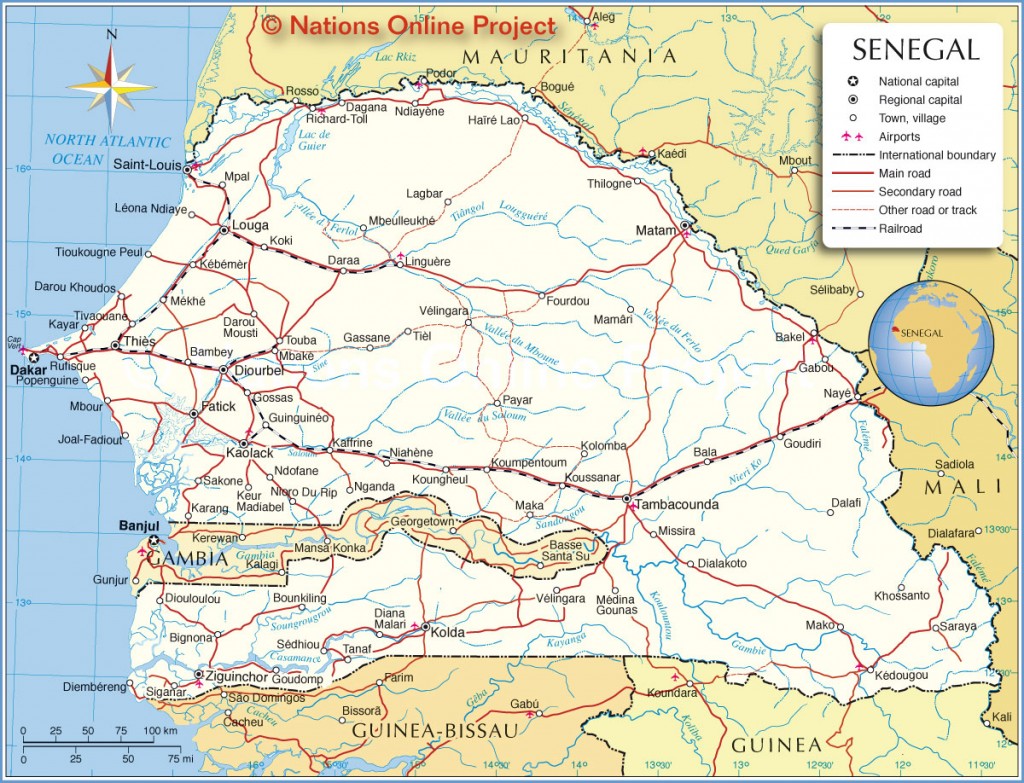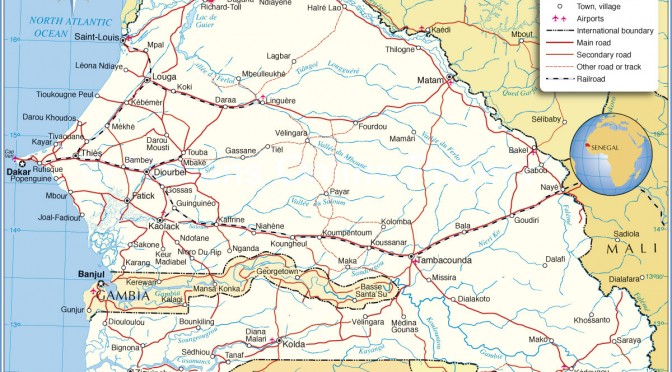The town of Kahone, located in the Kaolack region, hosts the largest photovoltaic plant in Senegal, a project that can generate electricity for around 300,000 people at a low price and reduces CO2 emissions, as part of the authorities’ efforts to diversify the energy mix and reduce dependence on fossil fuels.
The facilities began operating in May 2021, along with others located in Kael (west), within the framework of a project financed by the International Finance Corporation (IFC), the European Investment Bank (EIB) and Proparco – with the participation of the French Development Agency and private shareholders – under the umbrella of the World Bank’s Scaling Solar program.
The plant, which has more than 129,000 photovoltaic modules installed on a plot of land of about 36 hectares, has an installed capacity of 43.9 MWp – which defines the maximum production under ideal conditions – with works managed by Engie, Meridiam and the Senegalese Sovereign Fund for Strategic Investments (FONSIS).
Mamadou Yakham Diagne, head of technical affairs for the team that manages the plant, said in statements to Europa Press that the annual production of the plant is estimated at 73.3 gigawatts/hour, which represents 1.1 percent of Senegal’s total production, taking into account all electricity generation channels.
Diagne also argues that the Kahone plant has generated a total of 33 direct jobs since 2020 – of which only five have gone to women – while another 290 jobs have been generated through contracts signed for operations, with only fourteen for women.
The construction of the plant, however, had an impact on part of the community, which led to the delivery of aid packages to 36 of them due to their vulnerable situation, including four who received food aid due to their nomadic life in order to support their capabilities during the lean season.
Five economic interest groups were also set up for 120 women living in the area, with funding of 16 million Central African francs (about 24,390 euros), and another five in the commune were funded with funds worth seven million Central African francs (about 10,670 euros), including food for children in ‘daaras’ or Koranic schools.
Diagne adds that, on the other hand, an agro-pastoral farm is “under construction” for the 28 associations as part of the Livelihood Restoration Plan (PRMS) to reduce the negative impact of the removal of the plant on these lands, in which part of the community also participates, once a year, to help with clearing tasks.
Technical data
Kahone is the fourth photovoltaic plant connected to the Senegalese electricity grid and, together with Kael, provides clean energy to more than 500,000 people in the African country, according to the World Bank’s Scaling Solar program, which specifies that the project received 38 million euros in international financing.
Scaling Solar also recalls that Senegal was the second country to put into operation photovoltaic plants supported by the program, after one was inaugurated in 2019 in Zambia and in the face of efforts to support similar plans in Ivory Coast, Madagascar, Togo, Afghanistan and Uzbekistan.
World Bank data show that 70.4 percent of the population currently has access to electricity, a figure that has increased in recent years and is in line with the authorities’ intention to diversify energy sources – in line with the Senegal Emergence Plan -, reduce energy costs, increase generation capacities and increase access in rural areas.
The country, which also supports energy cooperation at the regional level as a member of the West African Power Pool (WAPP) – the union of national electricity companies in this area of ??the continent under the auspices of the Economic Community of West African States (ECOWAS) – and is a member of regional organizations for the development of hydroelectric resources, seeks with this type of projects “universal” access to electricity by 2025.

This represents 8.3% of Senegal’s renewable energy installations and 2.3% of the country’s electricity production installations, according to Diagne, in line with the objective set by the government of former President Macky Sall that renewables should be 30% of the energy mix.
The electricity generated at the plant is sent via an underground network to a nearby facility of the Senegalese National Electricity Company (Senelec), which, together with the fact that the facilities were built on public land, allows it to be sold at one of the lowest prices in West Africa.
The prices of electricity generated at the Kahone plant are around 25 Central African francs (less than four euro cents) per kilowatt/hour, as explained by representatives of the plant during a press visit to the facilities during a visit to the country by the European Commissioner for International Partnerships, Jutta Urpilainen.
The EIB itself highlights on its website that the start-up of this plant – which is 100% functional, according to these experts – together with that of Kael, is part of the “objectives of the EU and Senegal” to achieve “renewable energy generation” that respects the guidelines set in terms of climate and “increases energy supply and its affordability” for the population. Emissions reduction
In this regard, Diagne highlights that “in 2023, the plant made it possible to reduce the greenhouse gas emissions rate by 24,727 tonnes of CO2”, a figure that contributes to the Government’s efforts to reduce emissions in the sector, historically dependent on the import of fuels and with 80% of its energy mix based on oil.
The 129,060 photovoltaic modules installed were delivered by the Chinese company JinkoSolar and are cleaned at regular intervals by a machine designed to maximise their absorption capacity against pollution and dirt that may be deposited on them in order to ensure that they operate at full capacity, although always depending on weather conditions.

Thus, apart from the obvious impact of the absence of sun in rainy seasons or cloudy days, the experts present during the visit highlight that excessive heat or radiation are equally negative as they cause the panels to not be able to function properly due to the semiconductor materials that compose them.
As for recycling broken panels – whether due to impacts, accidents or breakdowns – these are stored in a container at the Kael plant, after which they are “sent by sea freight to France, in collaboration with the company Weeecycling” for these tasks, given the lack of possibilities for this at the national level.
However, Diagne maintains that panels that do not work properly “but continue to produce energy” are the subject of work in search of “reuse solutions for vocational training or domestic use in local communities”, which would make it possible to “ensure rigorous monitoring to recover them once their useful life has ended and recycle them”.


